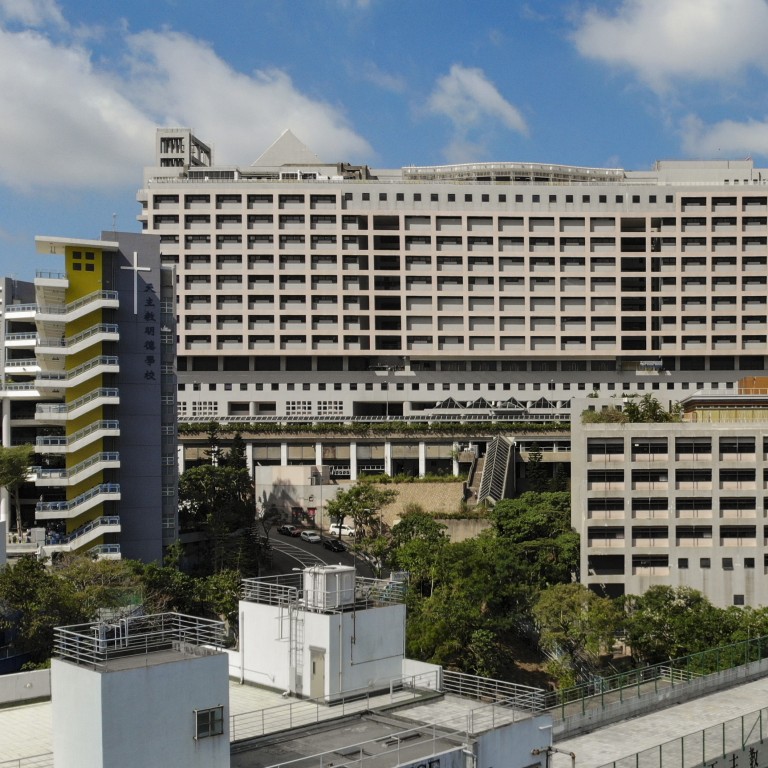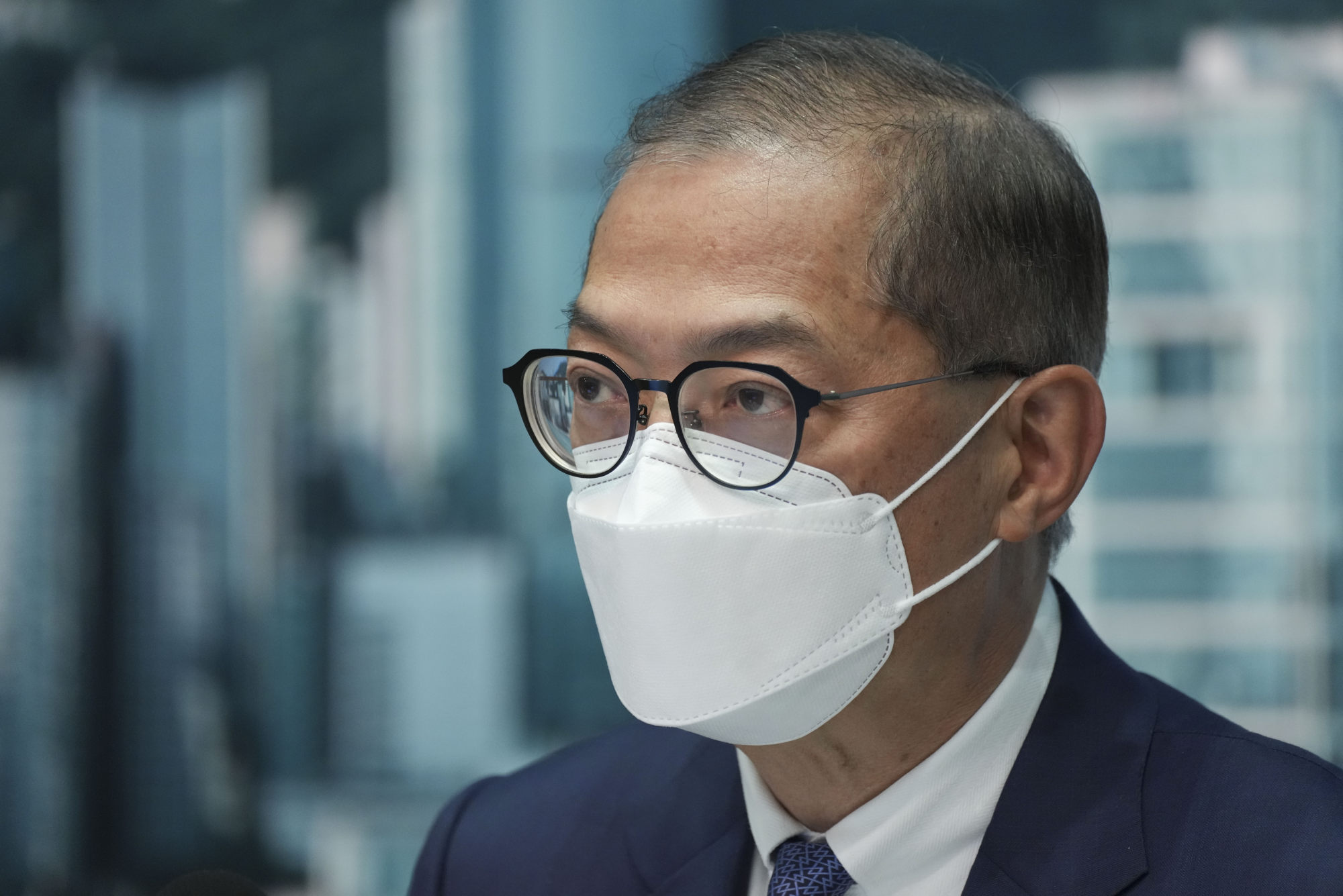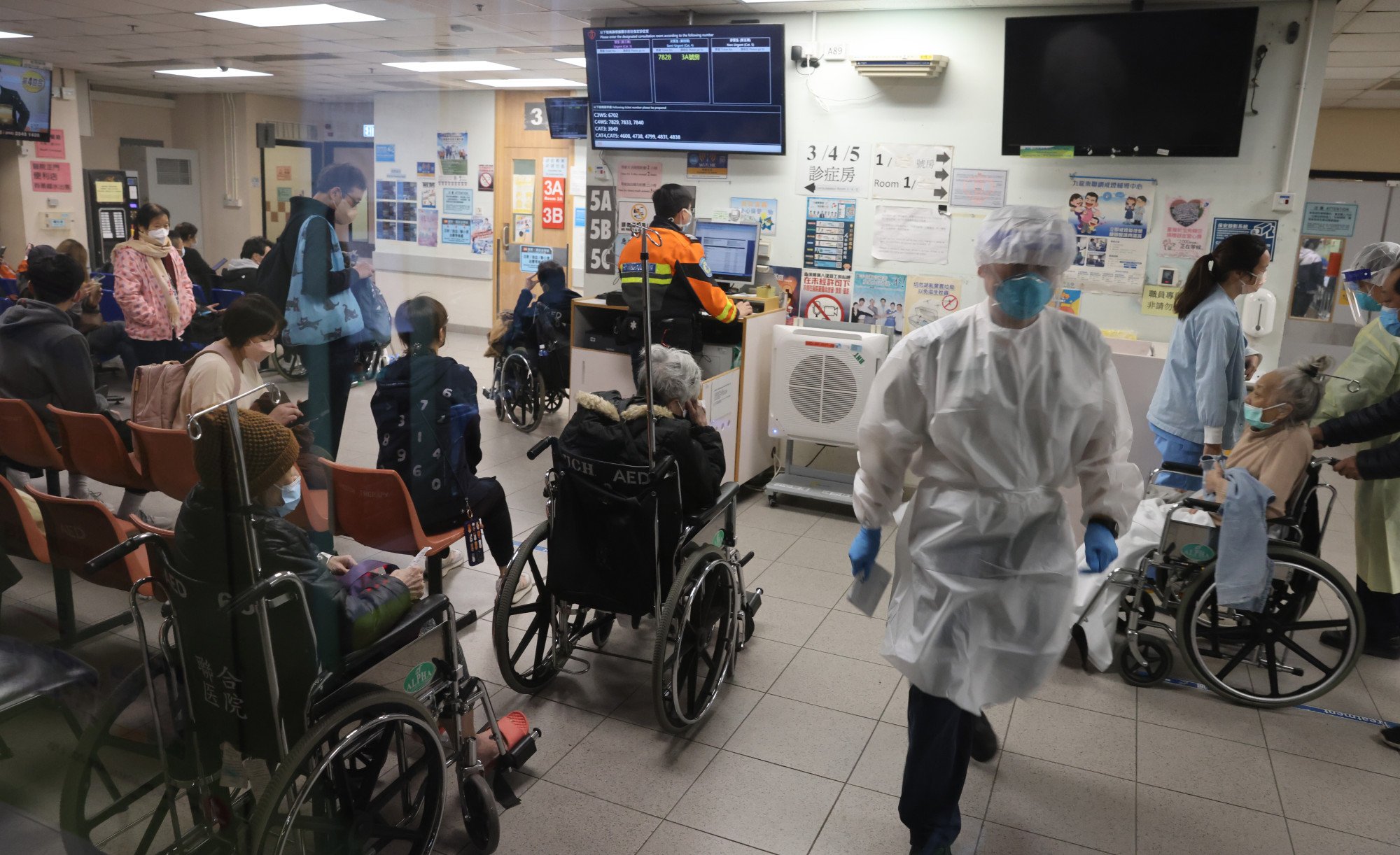
Sensors, tracking devices among raft of measures announced by Hong Kong public hospitals after patient dies
- Hospital Authority also announces increase in inspections of toilets and patrols of waiting halls at A&E departments
- Secretary for Health Lo Chung-mau offers condolences to family of patient who waited more than 12 hours for treatment in Pamela Youde Nethersole Eastern Hospital
Secretary for Health Lo Chung-mau offered his condolences two days after the 58-year-old chronically ill woman was found unconscious in a toilet for disabled people at Pamela Youde Nethersole Eastern Hospital and later certified dead. She had waited for more than 12 hours in the hospital’s accident and emergency department.

“[The government] expresses regret over the incident and extends its condolences to the patient’s family,” Lo said.
The Hospital Authority announced a series of measures aimed at enhancing patient safety. With immediate effect, staff would inspect toilets in A&E departments once every hour and patrols of patient waiting halls would be increased, it said. Higher-risk residents would be able to wait in an area closer to healthcare workers.
It added that sensor systems would also be installed in accessible toilets in some emergency departments as a trial and they would alert hospital staff if a patient fell or remained still for a long period of time.
The authority also plans to introduce patient tracking systems on a trial basis in some emergency departments starting from the third quarter of this year.
“Suitable patients with consent will be given a tracking device after registration. The system can track a patient’s location in an A&E [department]. If there is any abnormality, healthcare workers can locate the patient and provide assistance immediately,” an authority spokesman said in a statement.
Hong Kong patient groups welcome new Greater Bay Area medical subsidy
He added that all A&E areas in newly completed hospitals would be equipped with the related systems in the future, and the authority would extend these to more emergency departments in stages to improve patient safety.
The deceased’s case had been referred to the Coroner’s Court for follow-up, and the government would look into improvements after findings from the investigation were released, Lo said.
The woman visited the A&E department of the hospital in Chai Wan on Sunday at around 11pm, reporting a fever and cough, but she was only assessed at 11.15am the next day.
Hospital staff members attempted to locate her twice by making calls over the PA system at around 12.30pm and 1.45pm on Monday as they prepared to transfer her from the waiting area for further checks, but she was not found.

She was later discovered unconscious inside the toilet at the A&E waiting hall at 4.30pm and certified dead at 5.06pm, following unsuccessful efforts to resuscitate her.
Lo acknowledged that long waiting times at emergency departments in public hospitals were not ideal, and the issue related to enduring manpower shortages.
He said the government was already working on solutions, including an exchange scheme involving healthcare professionals from Guangdong province.
He also called on patients who did not have urgent medical needs to avoid emergency departments and attend public or private clinics instead.
On Tuesday, patient advocacy groups urged hospitals to put monitoring devices on elderly patients and those with chronic illnesses.
Call for monitoring devices for Hong Kong patients after missing woman found dead
They suggested installing devices that could monitor patients’ vital signs remotely or motion sensors in toilets so staff members could be alerted if users had not moved for a long time. Hospitals could also adopt radio frequency identification tags to monitor the location of patients, they said.
The Hospital Authority previously said staff inspected and cleaned the toilets seven times a day and the one in question had an alarm that would signal the nurse station.
Undersecretary for Health Libby Lee Ha-yun told the Legislative Council on Wednesday the government would look for ways to make improvements amid continued hospital redevelopment projects.
“We will learn the lessons and see if we can make use of new monitoring technology, such as motion sensors, in the newly built hospitals,” Lee said. “We will review the designs of hospitals to see whether new devices can be added.”
Public hospitals have also been hit by incidents involving suspended medical equipment, such as surgical lights, which had become detached and fallen.
Hong Kong welcomes more Guangdong healthcare workers under exchange programme
Dr Tony Ko Pat-sing, the authority’s chief executive, said public hospitals had already carried out safety checks on about 8,000 pieces of suspended medical equipment after repeated incidents since February.
More than 300 locations where weaknesses in concrete ceilings were identified had also been fixed, he said.
A surgical light in United Christian Hospital in Kwun Tong fell in mid-February and injured the shoulder of an anaesthetic assistant.
Kwai Chung Hospital in March also reported that a piece of concrete in a consultation room had fallen from the ceiling. No one was injured in the incident.


